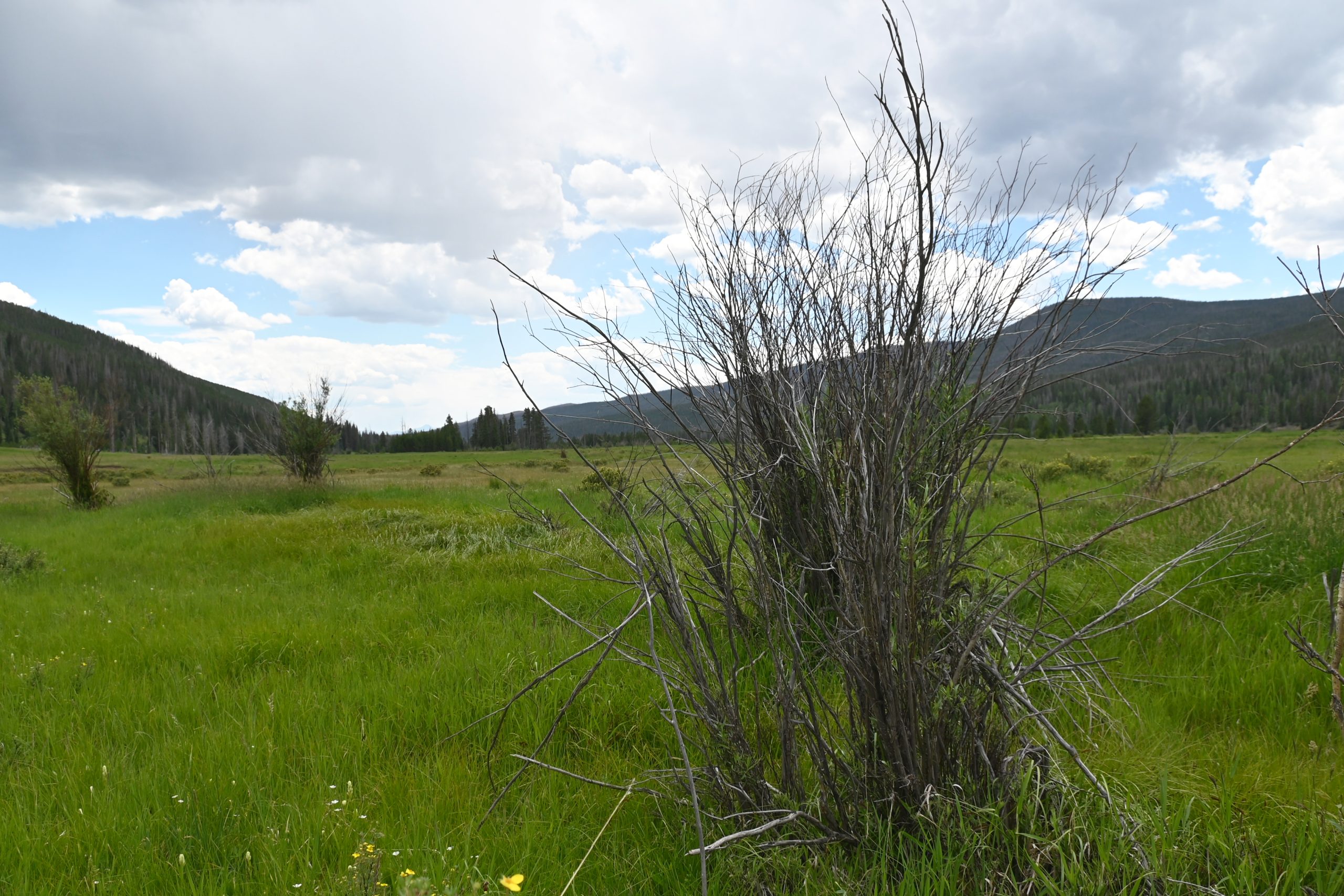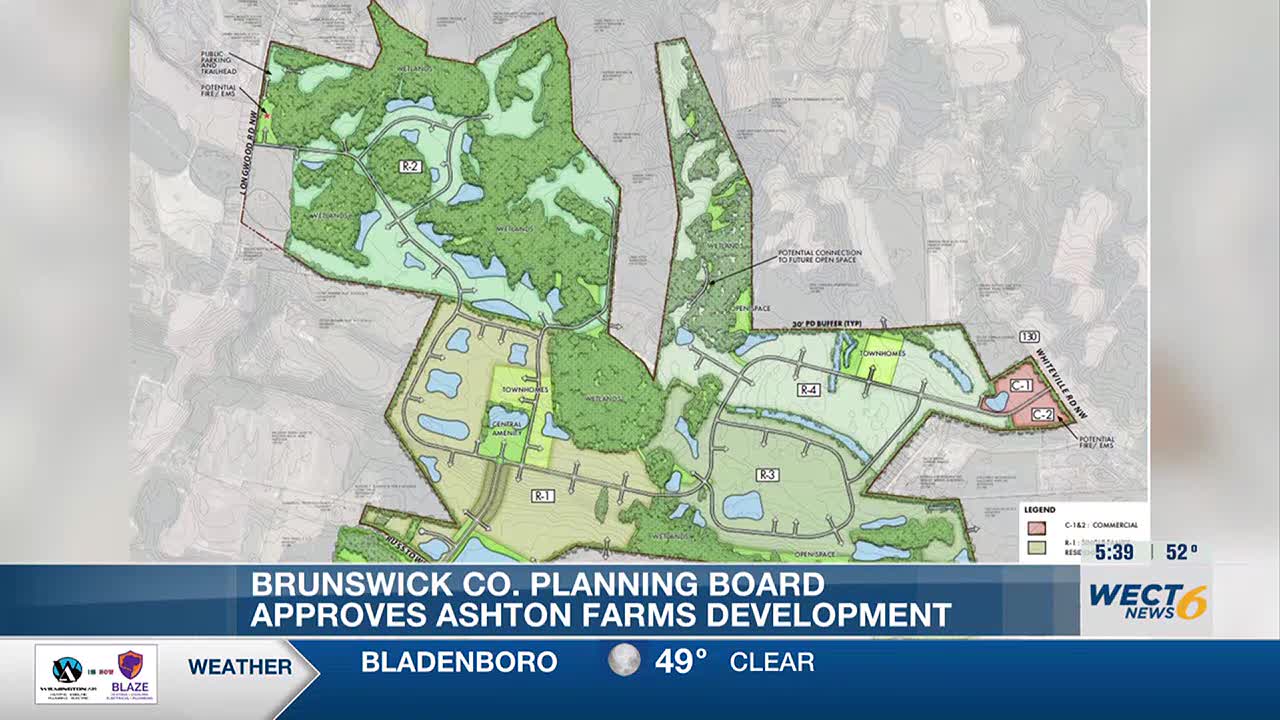Report on the Reorganization of the U.S. Forest Service and its Implications for Sustainable Development Goals
1.0 Introduction
The United States Department of Agriculture (USDA) has announced a significant reorganization that includes the elimination of the U.S. Forest Service’s (USFS) nine regional offices. This report analyzes the restructuring plan, its operational consequences, and its direct impact on the advancement of several United Nations Sustainable Development Goals (SDGs), particularly those concerning environmental stewardship, institutional stability, and economic well-being.
2.0 Overview of the USDA Reorganization Plan
A memorandum from the Agriculture Secretary outlines a plan to consolidate USDA services and decentralize operations from Washington, D.C. The key components of this plan include:
- Elimination of USFS Regional Offices: The nine existing regional offices, which form the primary administrative layer between the national headquarters and over 120 national forests, will be phased out.
- Creation of USDA Hubs: Five new USDA regional hubs will be established in Raleigh, NC; Kansas City, MO; Indianapolis, IN; Fort Collins, CO; and Salt Lake City, UT. These hubs will absorb duties from various subagencies.
- Consolidation of Research: Seven of the USFS’s stand-alone research stations are slated for consolidation into the Fort Collins hub.
- Workforce Reductions: The plan follows the termination of approximately 3,400 probationary and “diversity, equity and inclusion” related employees. The memo also notes that 15,364 USDA workers have opted for deferred resignation, indicating a substantial reduction in workforce capacity.
3.0 Impact on Sustainable Development Goals (SDGs)
The reorganization poses significant challenges to the achievement of multiple SDGs. The following sections detail the primary areas of concern.
3.1 SDG 15: Life on Land
The USFS manages 193 million acres of public land, making its operational effectiveness critical to SDG 15, which aims to protect, restore, and promote sustainable use of terrestrial ecosystems and halt biodiversity loss.
- Management Structure: The removal of the regional office layer creates a direct reporting line from over 120 national forest units to the chief’s office. Experts, including former USFS Chief Dale Bosworth, have questioned the viability of this centralized model for effective, localized ecosystem management.
- Research Capacity: Consolidating research stations threatens the localized, ecosystem-specific science that underpins sustainable forest management. This move could weaken the scientific basis for decisions related to biodiversity conservation and land degradation.
3.2 SDG 13: Climate Action & SDG 11: Sustainable Cities and Communities
Forests are essential for climate regulation and community resilience. The reorganization’s impact on firefighting and forest health directly affects SDG 13 (Climate Action) and SDG 11 (Sustainable Cities and Communities).
- Wildland Firefighting: The USDA pledges to minimize impacts on firefighting capabilities. However, this assurance is contradicted by reports of significant losses to the firefighting workforce and concerns from agency watchdogs. Reduced capacity compromises the ability to combat increasingly severe wildfires, a major source of carbon emissions and a direct threat to community safety.
- Community Resilience: National forests provide critical ecosystem services to local communities, including clean water and recreation. A reduction in management capacity and local presence could degrade these services and weaken the resilience of communities dependent on them.
3.3 SDG 8: Decent Work and Economic Growth & SDG 16: Peace, Justice and Strong Institutions
The restructuring has profound implications for the USFS workforce and the integrity of the institution itself, impacting SDG 8 (Decent Work) and SDG 16 (Strong Institutions).
- Workforce Instability: The plan involves significant workforce reductions through both direct terminations and voluntary resignations. This creates job insecurity and undermines the goal of providing decent work for all. Current staffing levels are reportedly lower than in the 1960s, despite a vastly increased workload.
- Institutional Effectiveness: The reorganization is being implemented without a clear, publicly articulated analysis of its benefits. Experts like former Dean Jim Burchfield note that improving efficiency requires a thorough examination of goals, which appears to be absent. The contradictory language in the official memo regarding workforce reductions raises concerns about transparency and accountability, key tenets of SDG 16.
3.4 SDG 4: Quality Education & SDG 17: Partnerships for the Goals
The consolidation of research stations directly undermines SDG 4 (Quality Education) and SDG 17 (Partnerships) by severing critical relationships.
- Severing Academic Partnerships: USFS research stations have long-standing, collaborative relationships with local universities. These partnerships are vital for scientific advancement and for training the next generation of forest managers and scientists. Breaking these connections dismantles a successful model for building technical and scientific capacity.
4.0 Conclusion
The USDA’s reorganization of the Forest Service, while presented as a measure to improve efficiency, threatens to undermine the agency’s capacity to manage public lands sustainably. The plan directly conflicts with the principles of several Sustainable Development Goals by weakening environmental protection (SDG 15, SDG 13), destabilizing communities and the workforce (SDG 11, SDG 8), eroding institutional integrity (SDG 16), and dismantling crucial scientific partnerships (SDG 4, SDG 17). A thorough re-evaluation of the plan’s objectives and consequences is necessary to ensure the long-term health of the nation’s forests and the communities that depend on them.
Analysis of Sustainable Development Goals (SDGs) in the Article
1. Which SDGs are addressed or connected to the issues highlighted in the article?
The article discusses a major reorganization of the U.S. Forest Service, which has direct and indirect implications for several Sustainable Development Goals. The primary SDGs connected to the issues are:
- SDG 15: Life on Land: This is the most central SDG, as the article’s subject is the U.S. Forest Service, the agency responsible for managing 193 million acres of public forests and grasslands. The reorganization directly impacts the capacity for sustainable forest management.
- SDG 8: Decent Work and Economic Growth: The article extensively covers workforce reductions, firings, and resignations within the USDA and the Forest Service, directly relating to employment and job security.
- SDG 16: Peace, Justice and Strong Institutions: The article questions the effectiveness, transparency, and rationale behind the reorganization, highlighting concerns about weakening a key public institution responsible for environmental management.
- SDG 11: Sustainable Cities and Communities: The discussion on the reduced capacity for wildland firefighting connects to protecting communities from environmental disasters like wildfires.
- SDG 10: Reduced Inequalities: The specific mention of firing employees from “diversity, equity and inclusion” departments points to a direct impact on policies and actions aimed at reducing inequality.
2. What specific targets under those SDGs can be identified based on the article’s content?
Based on the issues raised, several specific SDG targets are relevant:
-
SDG 15: Life on Land
- Target 15.2: “By 2020, promote the implementation of sustainable management of all types of forests…” The entire article revolves around the Forest Service, whose core mission is the sustainable management of the 193 million acres of public land it oversees. The concerns raised by former officials like Dale Bosworth and Jim Burchfield imply that this reorganization could undermine the effective management of these forests.
- Target 15.b: “Mobilize significant resources from all sources and at all levels to finance sustainable forest management…” The article details a significant restructuring of resources, including workforce reductions and office closures. The statement that the reorganization is a step in “reducing its workforce” directly addresses the allocation of financial and human resources for forest management.
-
SDG 8: Decent Work and Economic Growth
- Target 8.5: “By 2030, achieve full and productive employment and decent work for all women and men…” The article directly contradicts this goal by reporting that the Department of Government Efficiency (DOGE) “fired about 3,400 Forest Service employees” and that 15,364 USDA workers had “voluntarily elected deferred resignation.”
-
SDG 16: Peace, Justice and Strong Institutions
- Target 16.6: “Develop effective, accountable and transparent institutions at all levels.” The article raises serious questions about the effectiveness and rationale of the reorganization. Former Forestry School Dean Jim Burchfield states that such changes should happen after a “thorough examination of what your goals are,” and that this plan “didn’t pass the slap-on-the-head validity test.” The contradictory statements in the USDA memo about workforce reduction also point to a lack of transparency.
-
SDG 11: Sustainable Cities and Communities
- Target 11.5: “By 2030, significantly reduce the number of deaths and the number of people affected… caused by disasters…” The article highlights the risk to wildland firefighting capabilities, a critical service for protecting communities from wildfires. It notes that the Forest Service has “lost significant numbers of its firefighting force” and that staffing is lower than in the 1960s, which directly impacts the ability to manage these disasters.
-
SDG 10: Reduced Inequalities
- Target 10.3: “Ensure equal opportunity and reduce inequalities of outcome, including by eliminating discriminatory… policies and practices…” The article explicitly states that the 3,400 fired employees included those in departments “deemed related to ‘diversity, equity and inclusion’.” This action represents a direct dismantling of institutional structures designed to promote equal opportunity.
3. Are there any indicators mentioned or implied in the article that can be used to measure progress towards the identified targets?
Yes, the article provides several quantitative and qualitative indicators that can be used to measure progress (or regression) on these targets:
- Indicator for SDG 15 (Life on Land): The article mentions the “193 million acres of public land” managed by the Forest Service. The effectiveness of the management of this area is the key performance indicator, which the article suggests is at risk. The elimination of “nine regional offices” is a structural indicator of a change in management approach.
- Indicators for SDG 8 (Decent Work): The article provides specific numbers that serve as direct indicators of job loss. These include:
- Number of employees fired: “about 3,400 Forest Service employees.”
- Number of voluntary resignations: “15,364 USDA workers had voluntarily elected deferred resignation.”
- Reduction in headquarters staff: “keep no more than 2,000 of its present 4,600 headquarters staff in the Capitol area.”
- Indicators for SDG 11 (Sustainable Cities) & SDG 13 (Climate Action): The primary indicator is the strength of the firefighting workforce. The article notes the Forest Service was “trying to rehire about 1,400 workers with red cards,” indicating a specific shortfall in qualified personnel. The statement that the agency has “lost significant numbers of its firefighting force” is a direct qualitative indicator of reduced disaster response capacity.
- Indicator for SDG 16 (Strong Institutions): The number of regional offices being eliminated (“nine Regional Offices”) and the consolidation of “seven other stand-alone research stations” are clear indicators of institutional restructuring. The concern that “120-some national forests” might report directly to the chief serves as an indicator of potential institutional inefficiency.
- Indicator for SDG 10 (Reduced Inequalities): The targeting of specific departments serves as a clear indicator. The article identifies the firing of employees from departments related to “diversity, equity and inclusion” as a specific action, indicating a policy shift away from promoting equality within the institution.
4. Summary Table of SDGs, Targets, and Indicators
| SDGs | Targets | Indicators Identified in the Article |
|---|---|---|
| SDG 15: Life on Land | 15.2: Promote sustainable management of all types of forests. 15.b: Mobilize resources to finance sustainable forest management. |
– Total area of public land managed (193 million acres). – Number of regional offices eliminated (nine). – Consolidation of seven research stations. |
| SDG 8: Decent Work and Economic Growth | 8.5: Achieve full and productive employment and decent work for all. | – Number of employees fired (approx. 3,400). – Number of voluntary deferred resignations (15,364). – Reduction in headquarters staff (from 4,600 to 2,000). |
| SDG 16: Peace, Justice and Strong Institutions | 16.6: Develop effective, accountable and transparent institutions. | – Elimination of the 9-region administrative structure. – Contradictory statements in official memos regarding workforce reduction. – Lack of a “thorough examination” of goals before reorganization. |
| SDG 11: Sustainable Cities and Communities | 11.5: Significantly reduce the number of people affected by disasters. | – Loss of “significant numbers” of the firefighting force. – Need to rehire 1,400 workers with “red cards” (firefighting qualification). |
| SDG 10: Reduced Inequalities | 10.3: Ensure equal opportunity and reduce inequalities of outcome. | – Firing of employees from “diversity, equity and inclusion” departments. |
Source: mountainjournal.org







